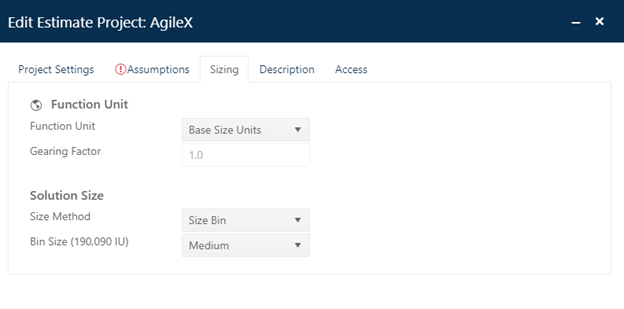
If you need to provide a size estimate (because there is no current solution value), you will use the Sizing tab. For new estimation projects, the Sizing method defaults to Size Bin (a rough order of magnitude, t-shirt type of estimate that calculates the estimated size using size “bins” ranging from Very Small to Very Large, calculated from the range of project sizes from your project’s chosen trend group on the Project Settings tab). The estimated value for each size bin is simply the average for each bin.
For new Design to Goal estimates, the default size bin is
“Unknown.” Expand the list control to see the available size bins and select the
one you think best matches the anticipated size of your system. Once you have
chosen a size bin, the calculated size is shown in parentheses after the Bin
Size label on the Sizing tab and also in the Size label field on the Assumptions
tab.

Because each trend group is based on different projects
with a variety of characteristics and size ranges, changing the trend group will
change the calculated size for a given “bin”. So, for example, a Medium Business
system might be 142K Base size units (a normalized measure of size roughly
equivalent to a line of code). A Medium Avionics system would be closer to
180K. This makes it very important that you select the right trend
group for your project!
Of course, you can choose a different size method, function unit, and gearing factor. All of these fields and functions are described in the Project Settings chapter and in the Sizing tab topic in this user guide.